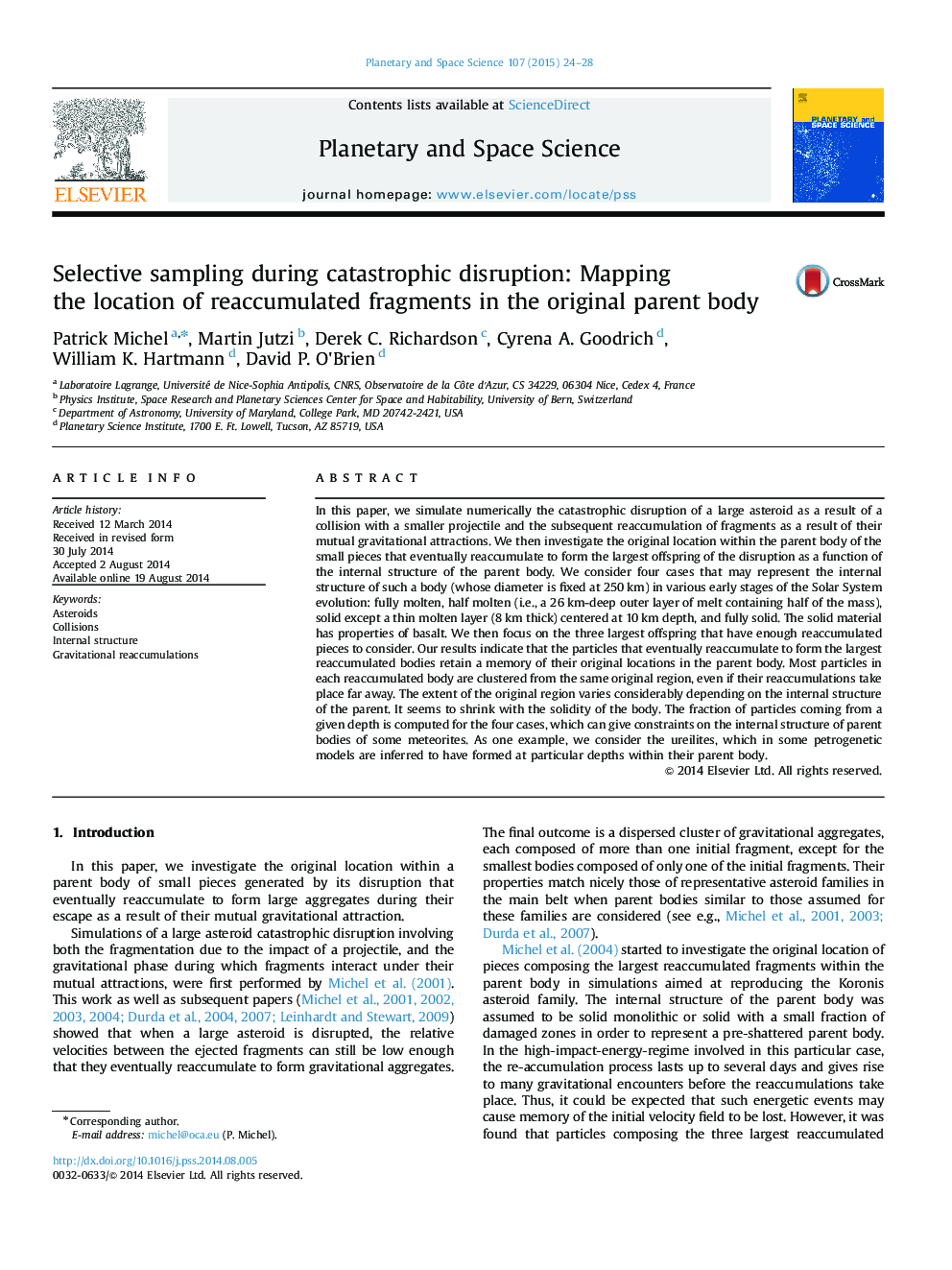| کد مقاله | کد نشریه | سال انتشار | مقاله انگلیسی | نسخه تمام متن |
|---|---|---|---|---|
| 1781002 | 1523931 | 2015 | 5 صفحه PDF | دانلود رایگان |
• We simulate the disruption of molten, partially molten or fully solid asteroids.
• The original location of particles forming the largest reaccumulated offspring is investigated.
• Particles forming the largest bodies retain a memory of their original locations.
• The extent of the original region varies considerably depending on the internal structure of the parent.
• We consider the ureilites, which in some petrogenetic models are inferred to have formed at particular depths within their parent body.
In this paper, we simulate numerically the catastrophic disruption of a large asteroid as a result of a collision with a smaller projectile and the subsequent reaccumulation of fragments as a result of their mutual gravitational attractions. We then investigate the original location within the parent body of the small pieces that eventually reaccumulate to form the largest offspring of the disruption as a function of the internal structure of the parent body. We consider four cases that may represent the internal structure of such a body (whose diameter is fixed at 250 km) in various early stages of the Solar System evolution: fully molten, half molten (i.e., a 26 km-deep outer layer of melt containing half of the mass), solid except a thin molten layer (8 km thick) centered at 10 km depth, and fully solid. The solid material has properties of basalt. We then focus on the three largest offspring that have enough reaccumulated pieces to consider. Our results indicate that the particles that eventually reaccumulate to form the largest reaccumulated bodies retain a memory of their original locations in the parent body. Most particles in each reaccumulated body are clustered from the same original region, even if their reaccumulations take place far away. The extent of the original region varies considerably depending on the internal structure of the parent. It seems to shrink with the solidity of the body. The fraction of particles coming from a given depth is computed for the four cases, which can give constraints on the internal structure of parent bodies of some meteorites. As one example, we consider the ureilites, which in some petrogenetic models are inferred to have formed at particular depths within their parent body.
Journal: Planetary and Space Science - Volume 107, March 2015, Pages 24–28
